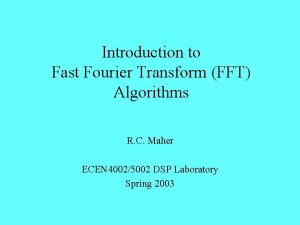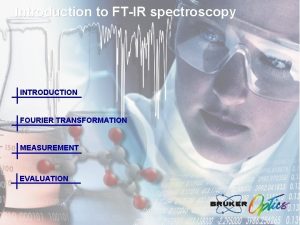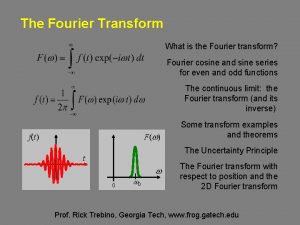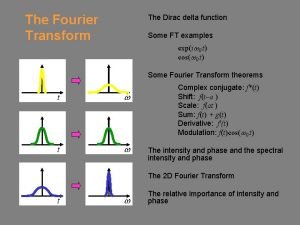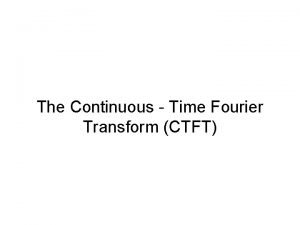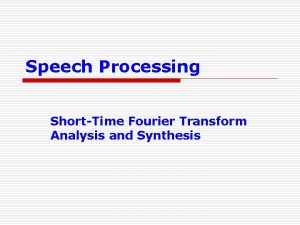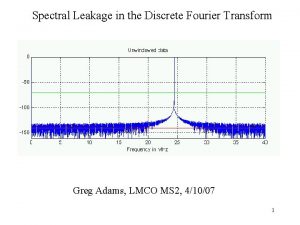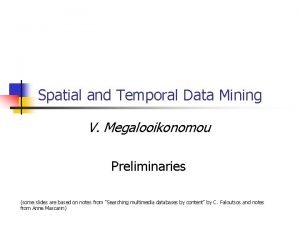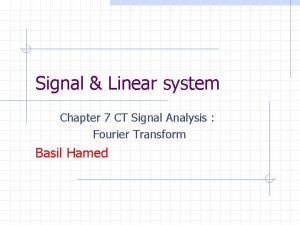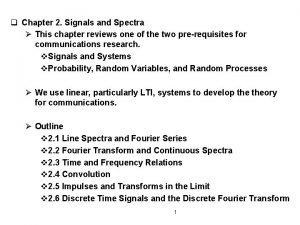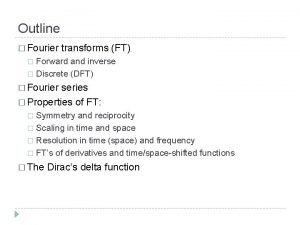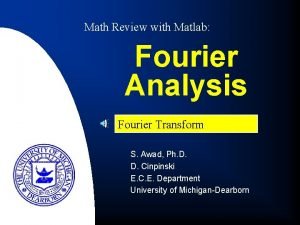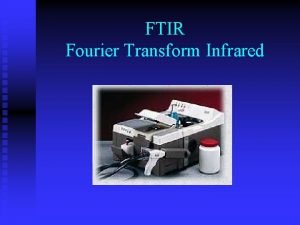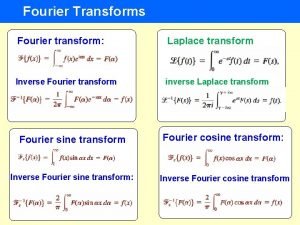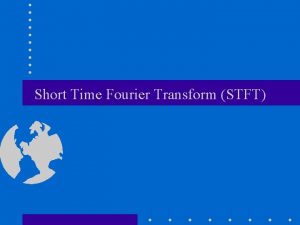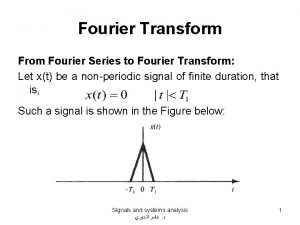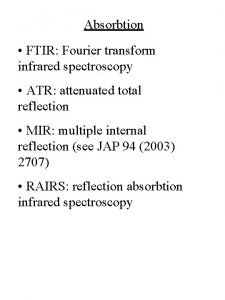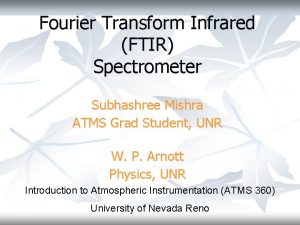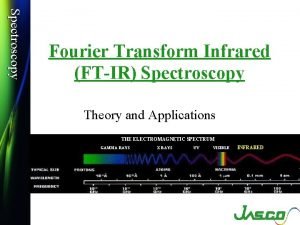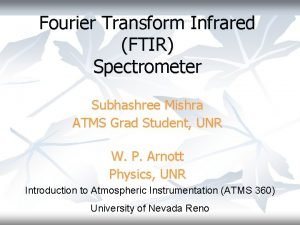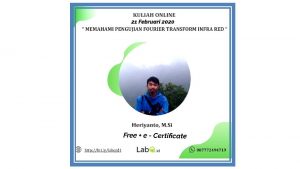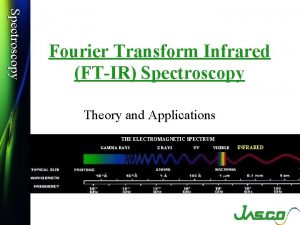FTIR Fourier Transform Infrared FTIR Introduction Air monitoring













- Slides: 13

FTIR Fourier Transform Infrared

FTIR Introduction Air monitoring data is useful for: * Assessing the health risks to the public and response workers. * Selecting personal protective equipment. * Delineating areas where protection is needed. * Determining actual or potential effects on the environment. * Selecting actions to mitigate the hazards safely and effectively.

FTIR Toxic atmosphere monitoring is done to: * identify airborne concentrations that could pose a toxic risk to response workers and the public. * evaluate the need for and type of personal protective equipment. * set up work zones or areas where contaminants are or are not present. Colorimetric Indicator Tubes

Characteristics of Air Monitoring To be useful air monitoring instruments must be: * Portable and rugged. * Easy to operate. * Inherently safe. * Able to generate reliable and useful results.

Reliable and Useful Results n The response time, sensitivity, selectivity, accuracy and precision of an instrument are important in evaluating the reliability and usefulness of the data the instrument generates.

FTIR Direct reading n Simultaneous monitoring of low level concentrations n Higher efficiency than other IR methods n Qualitative n Quantitative n

FTIR Michelson interferometer detector utilized to “observe” entire spectrum at same instant n Light is split between two mirrors n Reflected light beam split is measured n Fourier transform is used to plot intensity versus wave number comparing moving and stationary mirrors n

FTIR n Typically used in “extractive mode” as compared to open-path mode u Real-time monitoring u Auto exhaust u Stack gases u Air pollution

FTIR n Useful because u Able to monitor wide variety of compounds u Non-invasive monitoring u Covers large areas

FTIR u u Calibration is “up in the air” but calibration cells are being developed. Discrepancy between clean air and monitored air can be troublesome in field scenarios

FTIR

References Cited http: //www. ftir. cz/ Accessed 05/02/01 http: //www. nicoletindustrial. com/Antaris/Anta ris. html Accessed 05/02/01 NIOSH Manual of Analytical Methods (NMAM®), 4 th ed. DHHS (NIOSH) Publication 94 -113 (August, 1994), Cassinelli, M. E. & O'Connor, P. F. (pfo 1@cdc. gov), Eds.

Bibliography Di. Nardi Salvatore R. (1998) The Occupational Environment-Its Evaluation and Control, AIHA, Fairfax, Virginia n Goetsch David L. (1999) Occupational Safety and Health for Technologists, Engineers, and Managers, Prentice Hall, Upper Saddle River, New Jersey n
 Introduction to fast fourier transform
Introduction to fast fourier transform Ftir spectra
Ftir spectra Hubungan air dengan tanah
Hubungan air dengan tanah Fourier transform
Fourier transform Fourier transformation dirac
Fourier transformation dirac Cftft
Cftft Short time fourier transform applications
Short time fourier transform applications Dft table
Dft table Parseval's identity for fourier transform
Parseval's identity for fourier transform Fourier transform properties table
Fourier transform properties table Synthesis equation fourier series
Synthesis equation fourier series Phase invariance
Phase invariance Fourier
Fourier Matlab ramp function
Matlab ramp function
